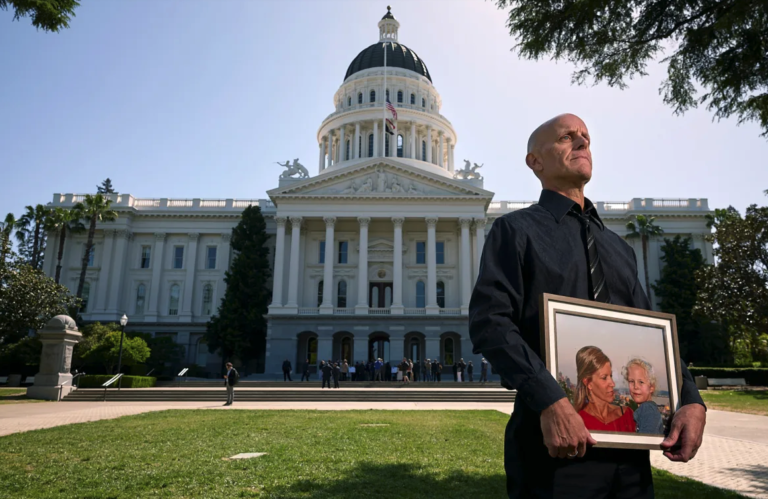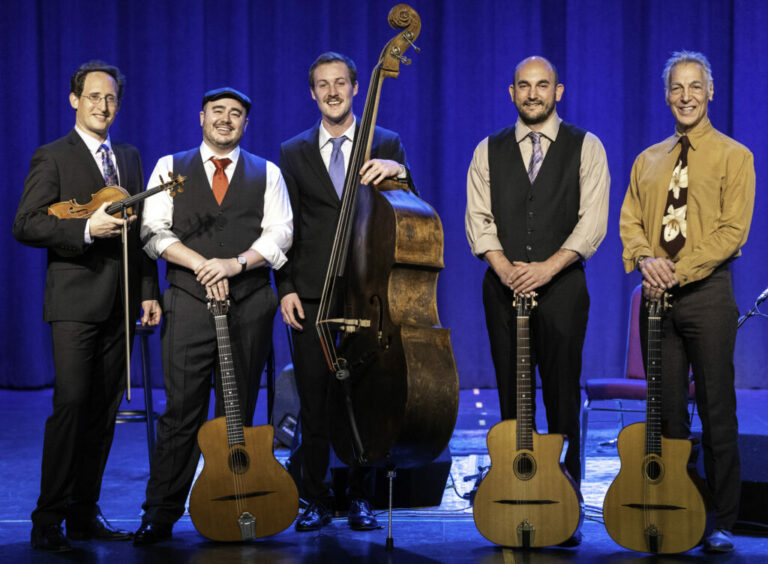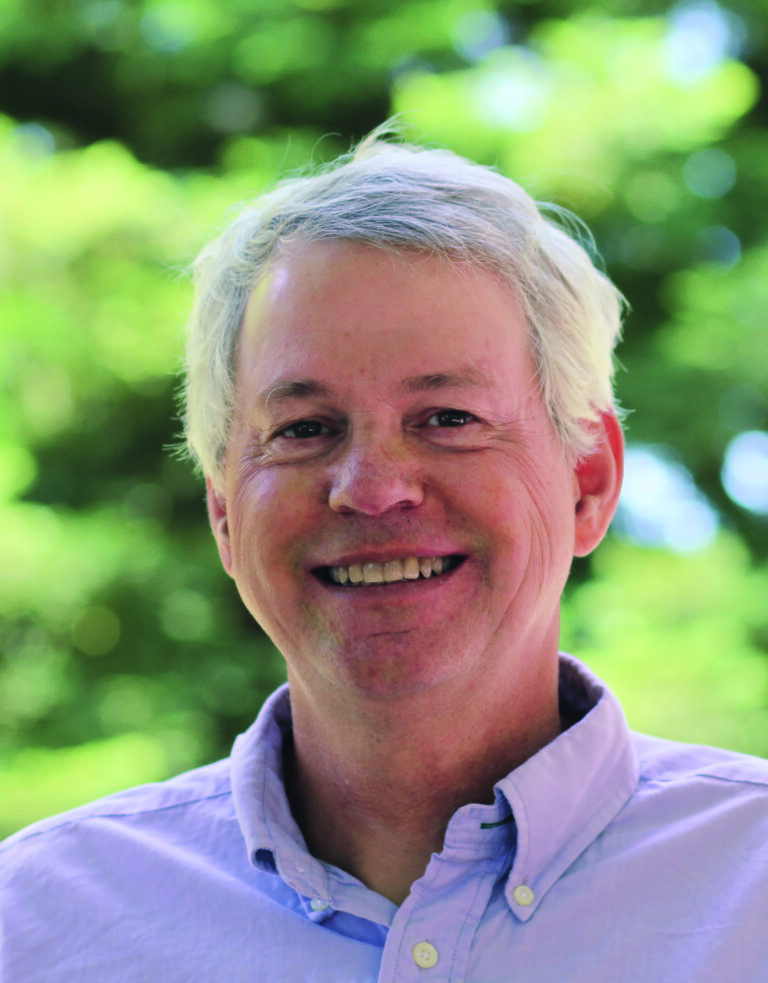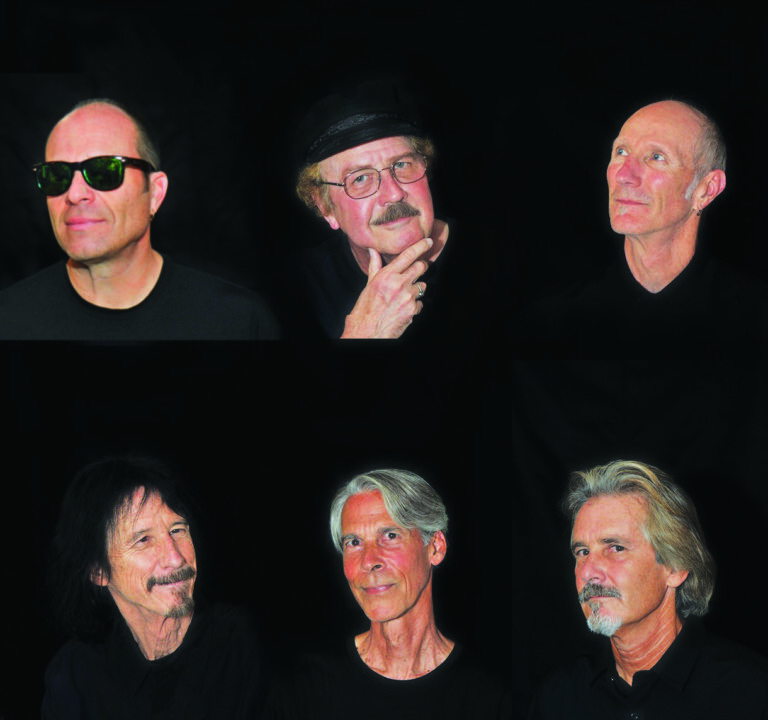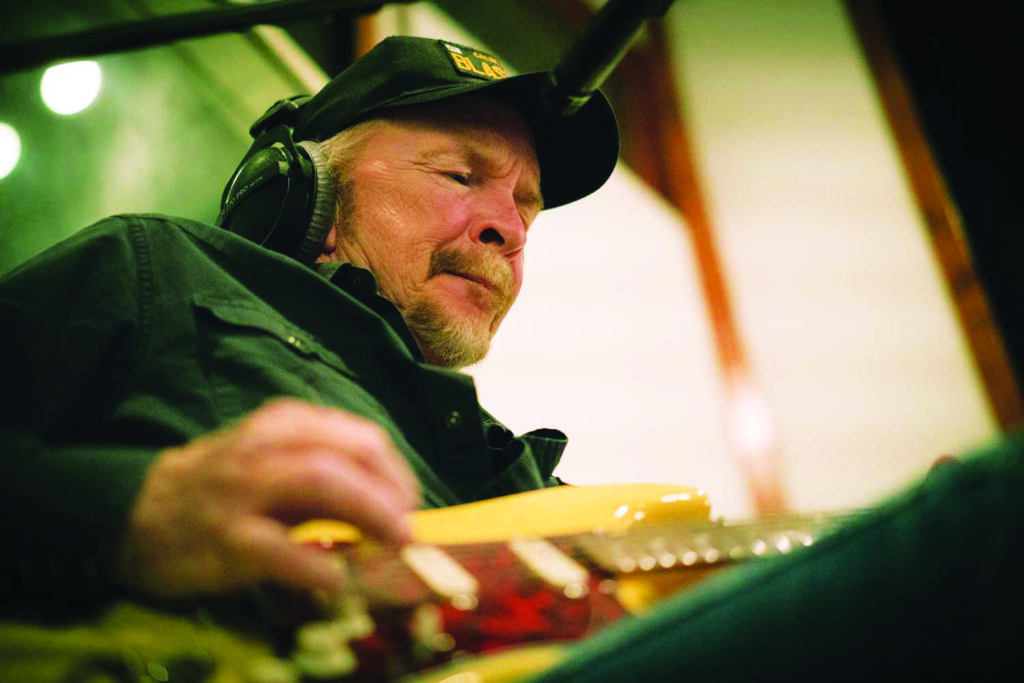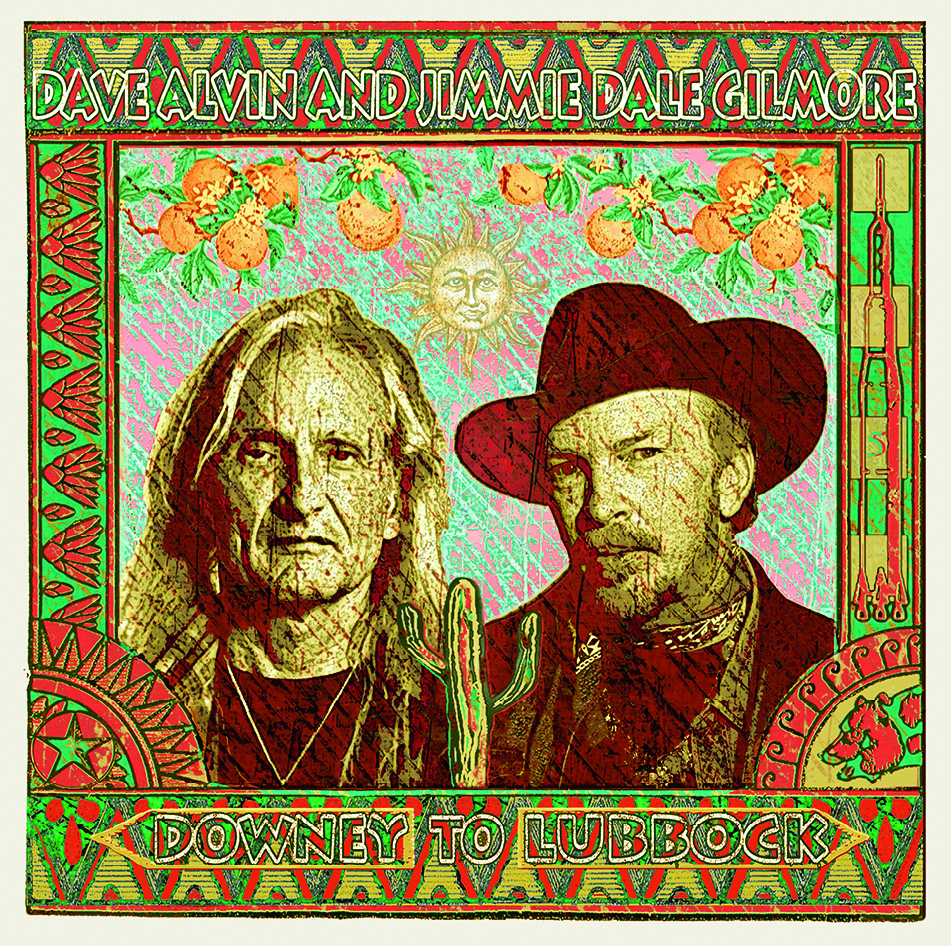As summer kicks off, more than a million California children are gearing up for horseback riding, swimming, archery, computer coding, and hip hop day camps. As parents scout out fun activities for their kids, most are likely unaware of the risks.
Unlike child care facilities and schools, children’s day camps are not required to conduct employee background checks, be licensed by the state, require CPR certification or report injuries or deaths to the state. No state agency conducts inspections for child safety, audits lifeguard certifications or reviews safety plans for activities that include zip-lining, swimming and shooting guns.
Doug Forbes and his late wife Elena Matyas didn’t know this when they dropped their daughter Roxie off at the Summerkids camp in Altadena one morning in June of 2019.
Less than an hour later they were racing toward the same hospital in Pasadena where Roxie was born. Their daughter had drowned in the camp pool. She was 6 years old.
Only as the couple sought answers about her final minutes of life did they discover the lack of oversight for children’s day camps in California. They filed an ongoing lawsuit against the camp for wrongful death and began advocating for state officials to mandate regulations. The camp denies that it was negligent.
“What we found out was that nobody is watching over these camps,” Forbes said. “Millions of children are at operations that are completely unlicensed.”
There are no statistics on how many camps there are or how many children attend each year. There also is no data on how many kids are injured, abused or die at day camps because the camps do not have to report those statistics.
The American Camp Association, a camp membership organization, estimates there are more than 700 day camps in California that enroll more than 1.2 million kids each summer. Day camps run for weeks or months during the summer and sometimes during school breaks. Manys also offer before and after care to accommodate parents’ work schedules.
REGULATIONS PROPOSED
At the end of May, the state Assembly passed Assembly Bill 1737 to create some oversight for day camps — legislation carried by Pasadena Democratic Assemblymember Chris Holden in response to what happened to Roxie. Its fate is now in the Senate.
California can’t have a group of “children who are susceptible to great bodily injury and potential death,” Holden said. “It would be totally irresponsible for us to continue operating this way as a state knowing what we know and the great harm that has happened to children.”
California is one of about a dozen states that do not regulate day camps, according to Holden’s office. Most states, including New York, have regulations in place and some cities require camp operators to attend city-run orientations and follow extensive rules.
Holden’s bill would require all day camps to register with the state Department of Social Services, conduct background checks for all staff and require staff be trained as “mandated reporters,” people legally required to report suspicions of abuse. It would also require non-government camps with certain activities like ziplining, archery, river rafting and riflery to submit their operational and emergency plans.
Under the bill, the Department of Social Services would also conduct random, unannounced inspections of all children’s camps annually. The bill exempts government-run camps from most requirements.
Currently, the proposal places oversight responsibility with the California Department of Social Services, which oversees child care throughout California. Originally, oversight of day camps was going to fall under the Department of Public Health but that was changed last week. Holden said neither agency wants to take this on.
Both agencies refused requests for interviews. In email responses, both departments said they don’t oversee day camps because day camps are not defined in state statute. State law only defines “organized camps,” which are overnight camps where kids stay five nights or more. These fall under the purview of the state Department of Public Health, which leaves oversight to local counties. The state does not require the counties to report anything about the camps.
Originally, Holden’s bill included licensing, regular inspections and a designated health supervisor. Those requirements were removed from the bill after lobbying by camp advocates and organizations representing county officials, as well as after meetings with the state departments of Public Health and Social Services. Now, the bill includes registration, random inspections, background checks for all staff and, depending on the type of activities a camp offers, the submission of operational and emergency plans.
“It’s very complicated trying to find who will be the regulator of this,” Holden said. “Everybody says this needs to happen but no one wants to take hold of it.”
Holden said he intends to try to strengthen the law in future years if this bill is enacted.
When Roxie drowned, Los Angeles County Sheriff’s Department reports show that the lifeguards who were poolside didn’t see her until another camp counselor outside the pool area yelled at them that Roxie was floating face down in the shallow end of the pool.
The family’s lawsuit alleges that the camp was negligent and that the camp’s lifeguards were not trained properly.
“We both jumped in the car that morning with her, went to camp, kissed her on the lips, said ‘Goodbye, I love you sweetheart.’ And boom, she’s gone,” Forbes said. “A six-year-old was left in a pool in need of help and nobody helped her.”
In the response to the lawsuit, the camp argues that none of the actions that day were “performed with the requisite malice, oppression, or fraud” for the camp to pay punitive damages.
While there are no regulations for day camps the state has extensive regulations for child care facilities. At times, the distinction between the two types of businesses is not clear.
After Roxie’s death, the Department of Social Services received two unrelated complaints that the Summerkids camp was operating as an unlicensed child care facility. The agency inspected the camp, determined it was operating an illegal child care program and cited the owners.
The state attorney general’s office filed a lawsuit against the camp on behalf of Social Services. It alleges the camp fits the definition of a child care and does not fall under any of the regulatory exclusions, which include health care facilities, cooperative agreements between parents, and public recreation programs. Neither Social Services nor the attorney general’s office would comment on the case, which is ongoing.
Despite the lawsuit, Summerkids is still operating and opened this weekfor summer camp. The Department of Social Services had asked a judge to shut it down as part of the ongoing lawsuit, but said its request was rejected.
Summerkids camp owners are declining interviews because of the pending litigation, said attorney Steve Madison, who is representing the owners in the attorney general’s lawsuit.
“Summerkids very much denies that it was negligent in any way or caused the tragic death of Roxie,” said Madison, who is also a member of the Pasadena city council. He added that the camp maintains it “paid for the appropriate CPR training” for staff.
He said the camp is not a day care facility and never has been. Madison said day care sites are usually indoors and required to have a certain number of kids per square footage and are staffed by certified teachers. Summerkids is held outdoors and is staffed by college kids and alumni campers, he said.
“There are numerous day camps in California that are not licensed as day care facilities under the statute that the AG has sued on,” Madison said. “They seem to be saying now that to be a recreational day camp you have to become this square peg in a round hold and apply to be a licensed day care facility.”
State law defines child care as providing “nonmedical care to children under 18 years of age in need of personal services, supervision, or assistance essential for sustaining the activities of daily living or for the protection of the individual on less than a 24-hour basis.”
The Department of Social Service would not provide a more detailed description of the differences and whether differences have to do with the age of the children, the activities, the hours of the program or how parents view camps for their children. However, in a video on the agency’s website about understanding licensed and unlicensed care, a narrator explains that one of the exempt groups from child care licensing is “public and non-profit programs designed to provide recreation on a part-time basis.”
Cathy Barankin, executive director of the California Collaboration for Youth, said she believes there is a vast difference between child care and day camps. Her organization represents the American Camp Association, Girl and Boy Scouts, and the Western Association of Independent Camps.
Barankin said child care facilities operate during the school year, focus on child development and taking care of kids while parents are working, and are conducted mainly indoors by teachers. Day camps, she said, usually happen when kids are out of school, emphasize outdoor activities and are led by camp counselors who are usually college students.
Mike Stillson, president of the Western Association of Independent Camps and a camp operator in Los Angeles County, said the differences are also based on the activities of the camp and the duration.
“Unfortunately, there is not much clarity from the oversight bodies,” he said.
Within weeks of Roxie’s death, her parents started the Meow Meow Foundation, named after Roxie’s favorite stuffed animal. The mission: to increase awareness about drowning prevention and improve day camp safety.
The foundation recently pulled its support from Holden’s bill because it no longer requires licensing and regular inspections, and allows for the American Camp Association to potentially be involved in how day camps report to the state.
This is the second time the foundation and the family have withdrawn support for similar proposed regulations — the same thing happened two years ago after a bill was watered down and shelved by its author.
Forbes encourages parents to be wary of camps and ask questions. Roxie was born with a rare autoimmune disorder that kept her parents vigilant about her safety. So, he said, when they selected Summerkids, they asked a lot of questions about the protocols and workings of the camp — assuming state licensing and oversight was required.
CRITICS OF PROPOSED DAY CAMP REGULATIONS
Some camp operators say they welcome safety regulations but are opposed to the current proposal.
“We want to be regulated to make sure as an industry that we are able to provide the safest programs for children,” said Stillson, executive director of Valley Trails Summer day camp in Castaic and Tarzana. “Right now anyone who wants to set up a camp and call themselves a camp can do it, and no one is out there to tell them they can’t.”
Even so, Stillson vehemently opposes the bill. He believes the Department of Social Services is not the right agency to oversee day camps, that the bill is too broad and that it should include city- and government-run camps, which serve thousands of children each summer, and that the state should recognize accreditation by the American Camp Association
The California Collaboration for Youth also opposes the bill, saying it is too broad and onerous.
“Day camps should be narrowly defined and overseen, not open to every single program that services children in the entire state,” she said.
Instead, Stillson and Barankin say camps belong under the purview of Public Health, which already oversees and inspects “organized camps.”
Forbes is still watching the bill closely.
His wife, Elena Matyas will not see the work the foundation has been doing lead to meaningful change. In March, she died after a second bout with breast cancer, Forbes said — adding that he believes his wife was more susceptible to a recurrence because of her intense grief.
So now he lives alone in the home the couple had once been renovating with their daughter in mind. Roxie would be 10 this year.
“I live with ghosts. The silence is deafening,” said Forbes, as the family pool glistened unused beyond double glass sliding doors off the dining room. “What I do every day is a constant reminder of despair, but I have to do this work and I don’t want to.”
Three days after Roxie died, the Los Angeles County Department of Public Health inspected the pool at the camp and found nine violations. It shut the pool down until those violations were fixed. Counties do oversee public pools but do not regulate day camps.
“If (they) would have gone out to inspect Summerkids’ pool before the camp season started, my daughter may be alive right now,” Forbes said. “We must manage each day knowing our little girl’s death could and should have been prevented.”
Madison, Summerkids’ attorney, said that the camp tried to get a county permit after Roxie died, but it is exempt from licensing because it is not considered an organized camp. That may change.
Last year the Los Angeles County Board of Supervisors voted to create an ordinance that would regulate both day and overnight camps. At the end of June, the board is expected to approve the detailed regulations.
Counties are Forebes’ new focus, given the obstacles to strict statewide legislation. He’s got a list of California counties and he’s working his way through it, starting with the most populous.
“The camp world is the wild, wild west,” Forbes said. “They want the kids to let loose, but there are consequences.”
calmatters.org (June 16, 2022)


